For car manufacturers autonomy has the potential to give rise to anonymity. The challenge for the future will be in brand redefinition and identity. Many are already discussing the move from being a car manufacturer to a transport service provider and how customers will change their perspective of what they are buying. Service and brand both have the potential to be redefined. This is an opportunity as opposed to the end of the road!
Our speakers from the car manufacturing and consultancy companies will present their visions and they’ll be joined by ridesharing and startup companies too.
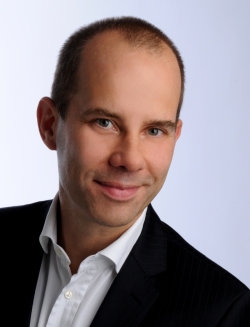
Wolf-Dieter Hoppe
partner
Arthur D. Little
GERMANY

Synopsis: While the automotive industry's transition to electric mobility and new mobility solutions is underway, six main roles with underlying business models are emerging: integrated mobility platforms, mobility services bundles, operating systems and system integration with new players, large innovation and profit-sharing partnerships, transition toward back-end and value-added solutions, and shift in value-add for suppliers. Many players are missing an essential brick in their strategy. Arthur D. Little’s new market studies and set of business model success factors clearly set out concrete measures and approaches for OEMs and suppliers to keep their competitive positioning.
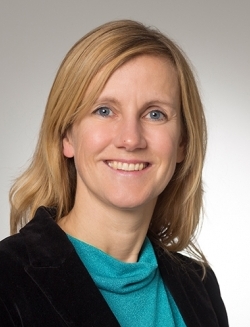
Doris Wiederwald
senior expert - mobility innovation
AustriaTech
AUSTRIA

Synopsis: On their way to implementation and the market, mobility innovation and research projects need to be developed alongside actual user needs and be tested in real-life test environments. In Austria, five Urban Mobility Labs provide a support structure integrating research, industry, government and civil society into interactions along the innovation cycle and with services as design-thinking methods, data and information service hubs and experimental areas. The presentation will show how such labs and testbeds can provide a basis for new partnerships between the automotive industry and policymakers to allow integrative and short learning cycles for the development of products as well as new business models.
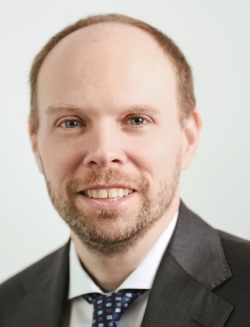
Gerhard Deiters
lawyer
BHO Legal
GERMANY

Synopsis: Innovation in the transportation sector (including autonomous vehicles, mobility and Transportation as a Service) is gaining momentum and requires developments to adapt to new technologies, requirements and user demands. Classical development contracts (e.g. waterfall model) require contract amendments in order to include changed requirements. Agile procedures embrace changes without a need to change the contract itself. Although technicians and engineers are used to such procedures, typical contract templates are not suitable for agile procedures. The presentation gives a short overview of the legal issues and provides solutions for core elements like definition of requirements, acceptance, customer undertakings and pricing provisions.

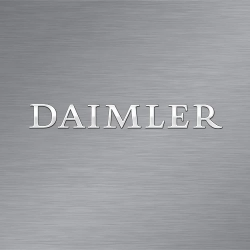

Rahima Yakoob
cloud computing and platform business for future mobility; PhD candidate at HHL Leipzig
Daimler AG
GERMANY

Synopsis: This presentation will focus on the transformation happening in the automotive industry, with the advent of alternative mobility solutions and changes to car ownership models. We will explore the role of OEMs, dealers, customers and suppliers in this new mobility landscape and how the business models will need to adjust to be competitive. Finally, we will look at the product and service transformation for the automotive industry.
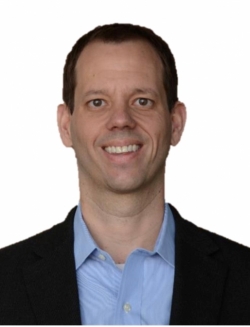
David Coleman
director
Deloitte
GERMANY

Synopsis: OEMs have made significant investments in developing and implementing a connected services portfolio across their vehicle line-ups, and the enablers behind them. Now, OEMs need to consider a multitude of options to monetize connected services, whether customer-facing or internally. We will discuss the strategic choices facing OEMs in connected service monetization, as well as implications for investments, partnerships and data usage/brokerage. OEMs need to articulate a clear service monetization strategy, or risk being left with connected services that are unable to return their cost of capital.
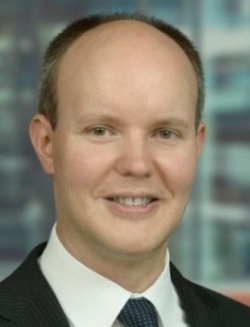
Thomas Pottebaum
director, automotive strategy
Deloitte Consulting GmbH
GERMANY
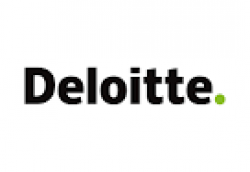
Synopsis: In recent years, autonomous driving and so-called robotaxis have become some of the hottest topics in the automotive industry – and beyond. Autonomous vehicle forecasts predict sales of more than 30 million autonomous vehicles in 2040. Although the sharpest gains are expected to occur after 2030 compared with one million in 2025, commercial market introduction has already been announced by several OEMs for 2021. Based on our new market simulation model we shed some light on the potential development of autonomous driving and urban mobility in Germany by 2035.

Christian Hainz
senior automotive analyst
EY
GERMANY
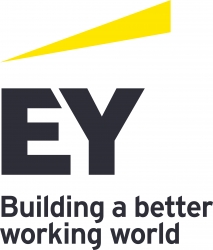
Synopsis: Urbanization, changing consumer expectations, regulation and emerging digital technologies are forming a new mobility ecosystem and setting the stage for immense innovation. The traditional automotive industry is shifting from building and selling assets toward Mobility as a Service solutions and offering a new mobility experience. New players and stakeholders are emerging within the new ecosystem, changing not only the transport experience but also value propositions and customer ownership. How can companies unlock the potential of the new mobility ecosystem?
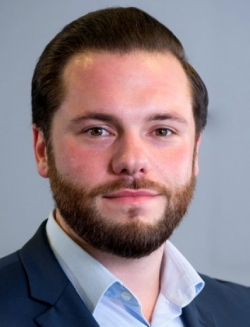
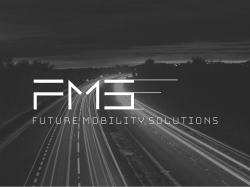

Markus Derer
senior consultant / project manager
FMS Future Mobility Solutions GmbH
GERMANY

Synopsis: The automotive industry – one of the fundamentals of the German economic miracle and former industrial role model – is now tagged with a big question mark. Global megatrends, new competitors and technological breakthroughs will change the automotive landscape like never before. Based on the technical and social developments in the last decades, we are able to shape this future according to our values and the ecological needs of our planet. Four examples will show the chances and risks for established players and the reasons why we should be thrilled about our future mobility.

Vanessa Miller
partner
Foley & Lardner LLP
USA

Synopsis: Successful manufacturers focus on managing their supply chain risks through intelligent and aggressive risk management strategies. Truly successful companies are moving beyond mere risk management and asking how they can enhance the value of their supply chain in a complex, international environment by implementing long-term strategies in the ever-changing auto industry landscape. This presentation will cover specific strategies to employ across a company (legal, engineering, procurement and sales) to enhance the value of its global supply chain and mitigate risks. It will incorporate examples of issues and proposed solutions given trends in technology, autonomous vehicles, lightweighting and stringent emissions standards.

Wouter Haspeslagh
mobility expert
Granstudio
ITALY

Synopsis: Over the last century, cars have evolved into Swiss knives on wheels. But as our needs, wants and attitudes transform, do our cars still correspond with how we want to live and what we want our habitats to be? The automotive sector is screaming: “Look! No hands!” But then what? What happens if we research new vehicles, services or solutions that are in better balance with our lives and environments? What types of innovations emerge when you think outside the car-shaped box?

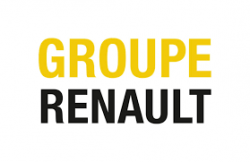

Patrizia Ilda Valentini
business development manager EV and new mobility
Groupe Renault
AUSTRIA

Synopsis: One of the biggest challenges we face right now is climate change. We need to transform human society into a society that co-exists with Mother Nature in a sustainable and respectful way. What actions must the industry – particularly the car industry – take to make that change and drive the future to sustainable mobility? In this presentation, you will find out that change is possible and what has been done or is still underway for the environment.

Charlotte Le Roux
senior associate
Hogan Lovells
FRANCE

Synopsis: For car manufacturers, but also suppliers and new entrants, autonomous, connected, electric and shared vehicles provide both challenges and opportunities. The challenge for the future of mobility will be in brand redefinition and identity. Many companies are already discussing the move from being car manufacturers to transport service providers, and how customers will change their perspective on what they are buying or using. This is an opportunity, not the end of the road.
Synopsis: Finnish capital city Helsinki aims to make private vehicle ownership redundant by 2025, and other cities will follow. By offering a digital service that integrates the entire transportation network and end-to-end journey planning, transportation will be made highly convenient and cashless. This presentation will examine MaaS and what it means to all automotive manufacturers and new mobility providers offering services such as carsharing, ride hailing or last-mile transportation operations of the future. The challenges of integrating and regulating so many forms of transport and so many providers will be considerable.
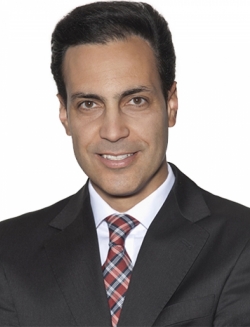
Patrick Ayad
partner and global head automotive and mobility
Hogan Lovells
GERMANY

Synopsis: For car manufacturers, but also suppliers and new entrants, autonomous, connected, electric and shared vehicles provide both challenges and opportunities. The challenge for the future of mobility will be in brand redefinition and identity. Many companies are already discussing the move from being car manufacturers to transport service providers, and how customers will change their perspective on what they are buying or using. This is an opportunity, not the end of the road.
Synopsis: Finnish capital city Helsinki aims to make private vehicle ownership redundant by 2025, and other cities will follow. By offering a digital service that integrates the entire transportation network and end-to-end journey planning, transportation will be made highly convenient and cashless. This presentation will examine MaaS and what it means to all automotive manufacturers and new mobility providers offering services such as carsharing, ride hailing or last-mile transportation operations of the future. The challenges of integrating and regulating so many forms of transport and so many providers will be considerable.

Jasdeep Sawhney
Mobility expert & consultant
UK
Synopsis: The 20th century was defined by the auto revolution and car ownership. Urban and suburban infrastructure and life in the 20th century were designed around the car – commercial city centers with residential suburbs, highways for feeding the city centers from the suburbs, etc. Even public transportation was eventually adapted for this car-centric city structure. However, with rapid urban expansion, the 21st century is fast being defined by a reduction of urban quality of life – by traffic, congestion, air quality and inefficient space utilization. As a result, and certainly enabled and catalyzed by the smartphone revolution, new mobility solutions are emerging in cities in an attempt to break us from the shackles of car ownership and to democratize mobility. These new solutions have been expedited in certain cities due to the drying up of investment in public transport infrastructure. In this mobility revolution, the car is being reduced to being just another tool in a plethora of other tools that are enabling mass as well as MaaS mobility. The car is becoming the transporter of people just like the van has been the transporter of goods. It’s also important to note that almost all the players in the value chain of 20th-century transportation are converging, or at least attempting to converge toward Mobility as a Service, or MaaS. Everyone is trying to find their place in the value chain of 21st-century mobility. So what role do OEMs have to play in this disruption? And how will their role transform the car in the 21st century? Will they have a significant role in the new value chain, or will they be reduced to becoming the Foxconn of the mobility revolution? This presentation addresses the role of OEMs in 21st-century mobility – both in personal transport and logistics, and specifically in the urban and suburban environments. The presentation will address OEMs’ role in electrification (including new form factors), automation, legislation, 'fleetification', shared mobility, and MaaS – and generally their transformation from metal benders to mobility solution providers.
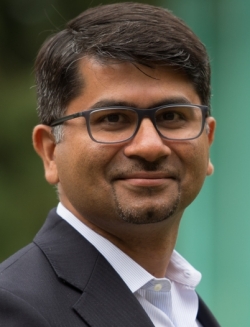
Ashish Khanna
partner
L.E.K. Consulting
UK
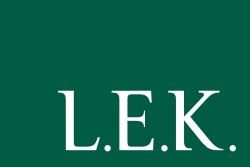
Synopsis: Electric vehicles (EVs) represent the future of transportation. Car manufacturers are announcing plans to produce greater volumes and models, and governments are actively encouraging their adoption through incentives. Yet, despite a rapid escalation in EV investment in recent years, consumers have been slow to respond. So what exactly does it take to encourage the mass adoption of EVs? L.E.K. Consulting examines the three most important supply and demand factors that will drive EV uptake: cost competitiveness with ICEs, access to public infrastructure, and EV model availability. We also discuss the implications for original equipment manufacturers and policymakers.
Synopsis: New mobility trends, such as ride hailing and electrification, are driving improved transportation cost structures and bringing significant opportunities to the value chains of businesses. With the right approach, businesses across the economy can see mobility as a stimulus for business model innovation – but how can they identify new revenue opportunities and leverage new mobility services to improve their operating efficiency? L.E.K. Consulting’s Mobility as a Platform (MaaP) framework provides a lens through which businesses can consider options for growth, highlighting three key opportunities: acquiring new customers, improving customer experience and driving loyalty, and increasing the efficiency of business operations.

Stefan Mueller
CEO & MD
Mobility Power House GmbH
GERMANY
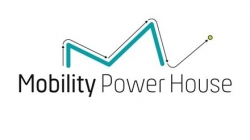
Synopsis: In dense urban areas, automotive OEMs are increasingly faced with a future where private car ownership is becoming more of a burden than a blessing. A variety of influencing factors change our mobility habits, which in turn creates a demand for new mobility solutions. At best these solutions are fully flexible, affordable, easy to use and an expression of our need for individual mobility. A steadily increasing number of new mobility offers by non-automotive companies is coming to the car sector, which means digitally enabled car/scooter sharing and ride hailing are set to strongly compete with the traditional business model of car manufacturers. Clearly the opportunities offered by Mobility as a Service (MaaS) represent both a threat and an opportunity for automotive OEMs. Some car manufacturers have understood the challenges ahead and are actively working to develop their own branded mobility services and fleet solutions. Whether this will suffice, however, in the long term to keep up with the pace of the MaaS market, which is financed and fueled by tech giants and institutional investors, is questionable at best.

Jaime Moreno
CEO
Mormedi
SPAIN

Synopsis: As mobility shifts its focus from product to service, auto companies face the twin challenges of redefining their offers and differentiating their brands. What should auto companies do to win when the rules of the game are completely different? How can they discover and design for real – and diverse – customer needs? How can they ensure that they will own the customer relationship in a MaaS world, and not lose out to upstarts like Uber or even mobility aggregators? The presentation will explain how the strategic use of design principles can help companies evolve in a way that makes them indispensable to users.
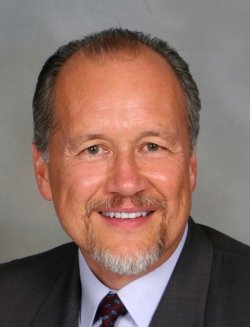
Daron Gifford
partner
Plante Moran
USA

Synopsis: Autonomous vehicles, Mobility as a Service and electrification are universally discussed megatrends that are on the verge of disrupting the existing auto industry. Taken together, they point to a fourth, less well-defined, trend – a complete reordering of automotive manufacturing as we know it today. This represents the biggest change to the automobile – and every step in the automotive value chain, including design, assembly operations, supplier manufacturing, retailing, financing, and public and private infrastructure – in more than a century. Our research dives into the detail behind this new reality of the automotive industry.
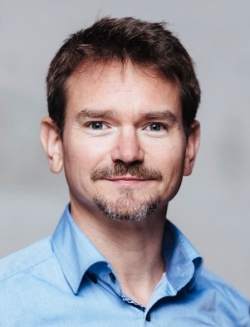
Olivier Reppert
CEO
Share Now
GERMANY

Synopsis: Big cities get lost in traffic. Fine dust is harmful to the health of people in urban areas. What do we need to do to make cities more livable again? Carsharing is just one possibility to reduce emissions and save space. On average, each shared car can replace up to five private cars. It's even better if those shared cars are fully electric. At the moment, every fifth trip of Share Now cars in Europe is already fully electric. The trend is increasing but even modern cities like Vienna face difficulties installing the infrastructure that is needed for e-carsharing.
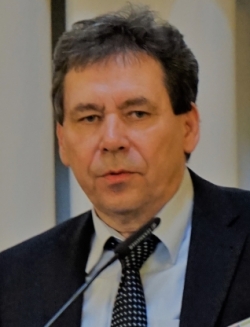
Jürgen Schlaht
vice president innovation management
Siemens Mobility GmbH
GERMANY

Synopsis: Today's travel is a mess: overcrowded in any transportation mode – in the air, on the road and on rail tracks. A key requirement of end users for passenger and cargo is easy, convenient and affordable in-time door-to-door transportation. The author is proposing a disruptive way to achieve these requirements: rather than passengers or freight, both will be interchangeable in a personalized transportation box known as the pod. The pods are standardized and suitable for all transportation modes. Based on the actual needs of the end users and the actual traffic situation in the different modes, an optimized route will be calculated and executed. Advantages for the travelers include maximum convenience through personalized pods, and maximum reliability of the journey by usage of all available transportation modes. Advantages for the environment and society: the pods are mostly on the move, and all pod carriers are electrified and interconnected for maximum efficiency of the system.

Boris Galonske
managing director
Silverbergh Partners
SWITZERLAND

Synopsis: High expectations exist for autonomous mobility concepts. One might expect that quite soon we will be using autonomous cars and UAVs. Similar expectations exist in cargo, as new autonomous platforms are being announced and tested. Electric drivetrains are being introduced and it seems that combustion engines do not have long to live. To deliver on these expectations, a sound financial framework needs to evolve with clear roles and obligations to enable the identification, management and mitigation of risk. As technologies mature, such a financial framework will foster the scaling of mobility technologies and businesses.
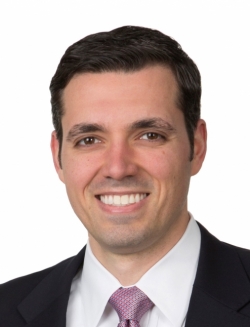
Jason Tutrone
associate - transportation practice group
Thompson Hine LLP
USA
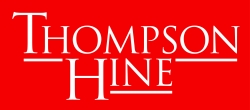
Synopsis: This presentation will address the challenges that landscape manufacturers and technology providers will meet, in the absence of defined criteria for highly automated and fully automated vehicles in the consumer and commercial sectors. We will discuss the lessons learned and considerations companies have developed and will need in preparing for a future with AV oversight and regulation. Given that safety and the perception of the AV technology are critical components to its success, we will address how steps are being made to provocatively manage this variable and how vehicle safety is being monitored and enforced today. Finally, the presentation will focus on proactive steps manufacturers can take to prepare for the eventual impact government oversight will have on automated vehicles.
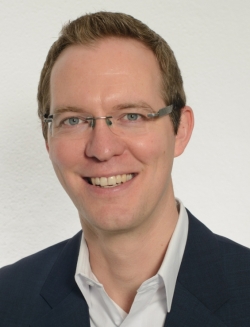
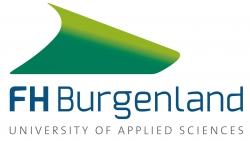

Adrian S Frey
future mobility expert - lecturer
University of Applied Sciences Burgenland
AUSTRIA

Synopsis: Just like for species, it will not be the strongest or most intelligent companies and experts that will be the winners of our times, but the ones who are most adaptable to change. This presentation will provide you with a deeper understanding of current buzz words around climate change and mobility patterns, and aims to give meaning to numbers and to highlight opportunities, from hype to trend. Why does it feel like a blink of an eye if we look back 10 years, but it is almost impossible to imagine 10 years into the future? This presentation aims to inspire us for the long way forward, or maybe not such a long way after all.
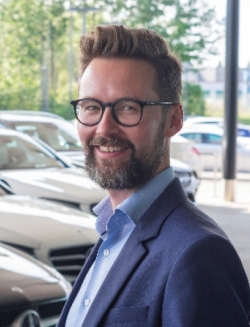
Patrick Holm
head of new ventures
Veho Oy Ab
FINLAND
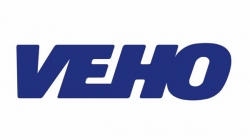
Synopsis: For 80 years Veho has successfully been importing, distributing and servicing cars, vans, buses and trucks. The road has often been bumpy but the results mainly good. Now the whole industry is changing more than ever before. The roles of the players in automotive are changing, customers' buying habits are changing and financially very strong new competitors are entering the market. How will a local automotive player be successful in the next 80 years?

Gaëlle Bailly Salines
senior manager for international business development
Vulog
FRANCE

Synopsis: The presentation focuses on the drivers of change in the automotive industry, and how automotive players can successfully navigate those through robust carsharing programs.